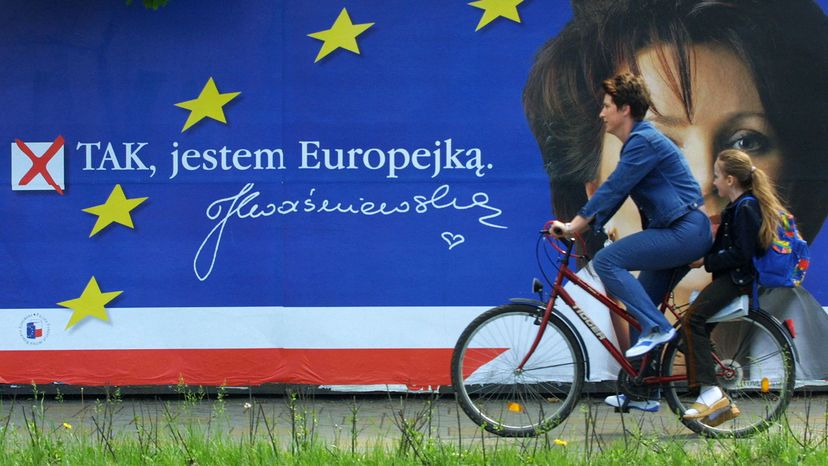The Fall of Communism and the Growth of the EU

At the beginning of the 1990s, as communist regimes disintegrated in central and Eastern Europe, the EU countries became even more closely knit. In 1992, EU nations signed the Maastricht Treaty, one of the constitutional documents that created the EU from the earlier European Community. In 1995, three more nations — Austria, Finland and Sweden — joined the EU, and the Schengen agreements gradually allowed Europeans to travel across the continent without having their passports checked at national borders [source: EU].
In the decade that followed, the EU grew even larger. Ten new nations — the Czech Republic, Estonia, Cyprus, Latvia, Lithuania, Hungary, Malta, Poland, Slovakia and Slovenia — joined in 2004, and Bulgaria and Romania in 2007. Croatia joined in 2013, increasing the membership of the EU to 28 nations [source: EU].
Advertisement
But by then, the EU was also experiencing stresses both from external and internal forces. Unrest and warfare in the Middle East created a surge of refugees, which Europe struggled to figure out how to accommodate. Terror attacks by extremist groups put European countries on edge [source: EU]. And in numerous countries, right-wing nationalist movements arose to challenge the idea of European unity.